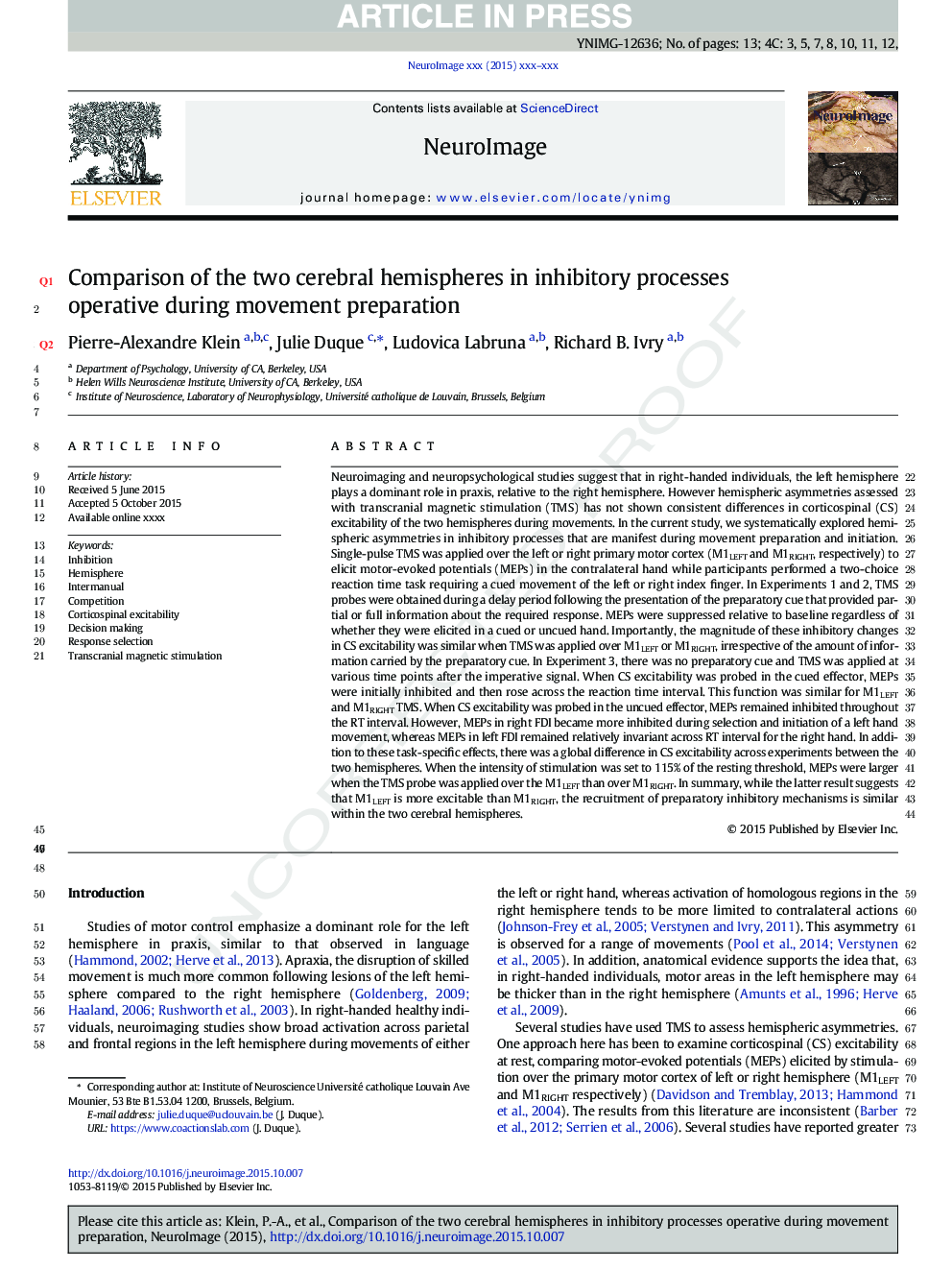| Article ID | Journal | Published Year | Pages | File Type |
|---|---|---|---|---|
| 6024083 | NeuroImage | 2016 | 13 Pages |
Abstract
Neuroimaging and neuropsychological studies suggest that in right-handed individuals, the left hemisphere plays a dominant role in praxis, relative to the right hemisphere. However hemispheric asymmetries assessed with transcranial magnetic stimulation (TMS) has not shown consistent differences in corticospinal (CS) excitability of the two hemispheres during movements. In the current study, we systematically explored hemispheric asymmetries in inhibitory processes that are manifest during movement preparation and initiation. Single-pulse TMS was applied over the left or right primary motor cortex (M1LEFT and M1RIGHT, respectively) to elicit motor-evoked potentials (MEPs) in the contralateral hand while participants performed a two-choice reaction time task requiring a cued movement of the left or right index finger. In Experiments 1 and 2, TMS probes were obtained during a delay period following the presentation of the preparatory cue that provided partial or full information about the required response. MEPs were suppressed relative to baseline regardless of whether they were elicited in a cued or uncued hand. Importantly, the magnitude of these inhibitory changes in CS excitability was similar when TMS was applied over M1LEFT or M1RIGHT, irrespective of the amount of information carried by the preparatory cue. In Experiment 3, there was no preparatory cue and TMS was applied at various time points after the imperative signal. When CS excitability was probed in the cued effector, MEPs were initially inhibited and then rose across the reaction time interval. This function was similar for M1LEFT and M1RIGHT TMS. When CS excitability was probed in the uncued effector, MEPs remained inhibited throughout the RT interval. However, MEPs in right FDI became more inhibited during selection and initiation of a left hand movement, whereas MEPs in left FDI remained relatively invariant across RT interval for the right hand. In addition to these task-specific effects, there was a global difference in CS excitability across experiments between the two hemispheres. When the intensity of stimulation was set to 115% of the resting threshold, MEPs were larger when the TMS probe was applied over the M1LEFT than over M1RIGHT. In summary, while the latter result suggests that M1LEFT is more excitable than M1RIGHT, the recruitment of preparatory inhibitory mechanisms is similar within the two cerebral hemispheres.
Keywords
Related Topics
Life Sciences
Neuroscience
Cognitive Neuroscience
Authors
Pierre-Alexandre Klein, Julie Duque, Ludovica Labruna, Richard B. Ivry,
